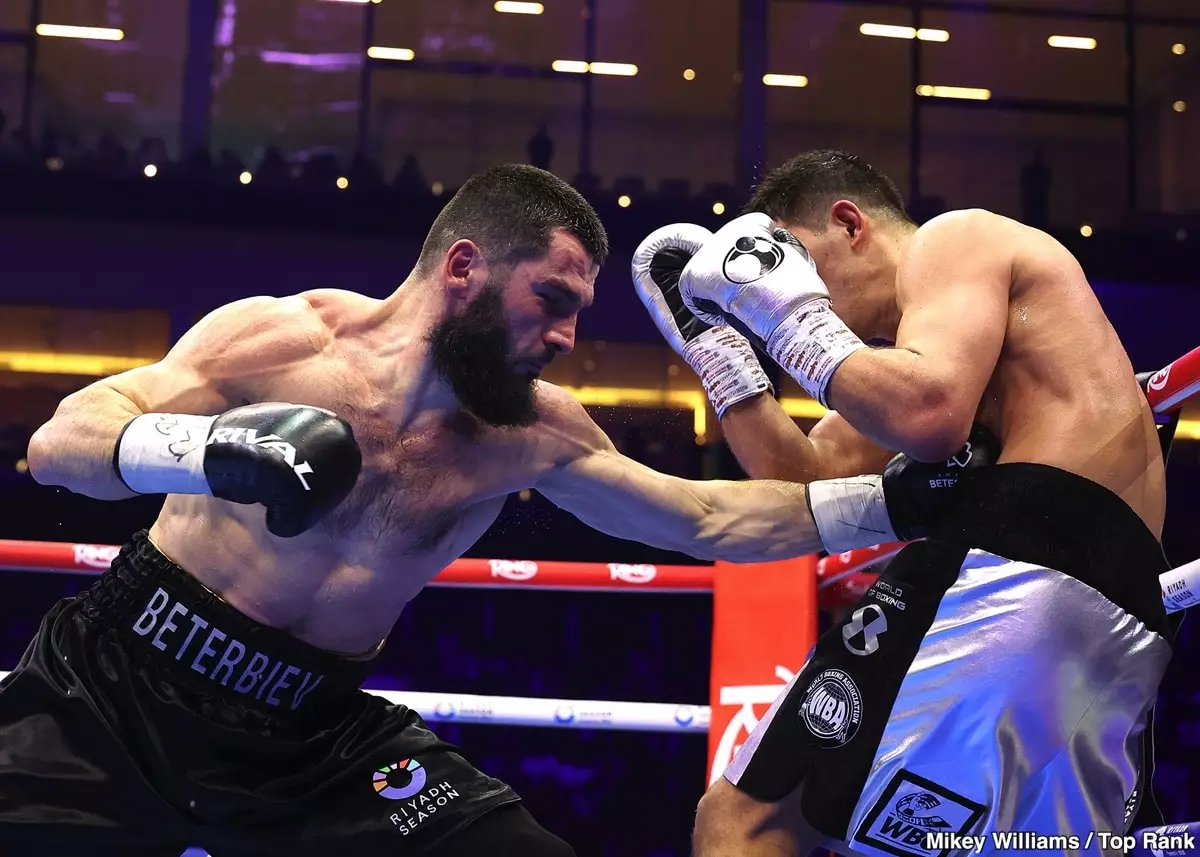In the realm of professional boxing, few rivalries have been as discussed yet underwhelming as that between Dmitry Bivol and Artur Beterbiev. Promoter Bob Arum sheds light on the Saudis’ fascination with this matchup, despite the evident lack of enthusiasm from American audiences. Reportedly, their rematch on February 22nd yielded a mere 45,000 buys in the U.S., a stark indicator of how disinterested fans are in this narrative. In an era where excitement and fan engagement drive pay-per-view sales, the low turnouts signal that neither fighter has managed to capture the American audience’s imagination.
Bivol and Beterbiev are undoubtedly skilled fighters, yet their fighting styles have produced bouts that rarely ignite excitement. Instead, fans are clamoring for dynamic matchups that promise explosive action. The demand for a contest between Bivol and the likes of David Benavidez epitomizes this craving. Benavidez possesses the aggressive style and raw energy that could catalyze a high-octane showdown, ensuring that the fight remains lively rather than stagnating into a tactical snooze-fest.
Financial Aspects and Compromised Competitions
Interestingly, despite the lackluster reception, the Saudis have expressed a willingness to support a third installment of the Bivol-Beterbiev rivalry, significantly increasing the purses for both fighters. Arum highlights this as a critical aspect of the boxing landscape today; wealthy investors looking to generate income are willing to invest heavily in a matchup that may not hold mainstream appeal. While this financial backing can elevate fighter salaries to previously unimagined heights, it raises questions about the motivations of the businessmen involved and the overall health of the sport.
Paying fighters large sums for a trilogy may stretch the notion of a classic rivalry, especially when the thrill factor is sorely missing. The stakes might not resonate beyond the confines of a boxing ring, as fans begin to question whether mere financial gain warrants the continued assembly of matches that fail to captivate. To some degree, this creates a disconnect between the sport’s traditional allure and the contemporary financial mechanics shaping it.
An Analysis of Styles: The Stagnation on Display
Looking at the two fighters, Bivol’s movement around the ring can resemble that of a defensive maestro seeking to avoid contact rather than a competitor keen to engage in an electrifying showdown. His schooled footwork, while effective, has rightfully earned him criticism for lacking intensity. On the other side, Beterbiev offers the engaging image of a power puncher but often fails to capitalize on openings, frequently waiting too long before launching his calculated attacks. The result has been a sequence of matches that lack the fast-paced thrills fans often equate with boxing’s greatest moments.
This stagnation exposes a fundamental dilemma in the sport: great fighters do not always equate to great fights. The repeated clashes of Bivol and Beterbiev seem to elicit more sighs than cheers, leading fans and pundits alike to question whether their rivalry will mature into something spectacular or fade into obscurity under the weight of routine predictability.
As the conversation around this rivalry continues, it reveals a glaring truth about contemporary boxing—it is a complex interplay of style, finances, and fan expectations. The interest fueled by oily purses can only carry a narrative so far before the sport’s core principles of excitement and connection begin to unravel.


Leave a Reply